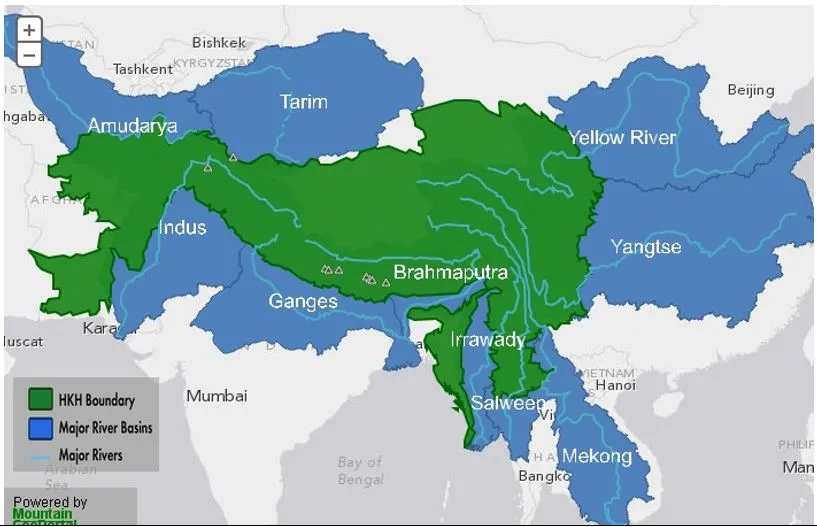

20th June 2024 (10 Topics)
Context
The Hindu Kush Himalaya (HKH) region, spanning eight countries including India, is renowned as the "water towers of Asia" due to its crucial role in providing water to millions through major river systems like the Ganga, Brahmaputra, and Indus. However, recent report (2024 ICIMOD Report) indicate alarming trends in snow persistence, impacting water availability and ecosystems across the region.
What is Snow Persistence?
- Snow persistence refers to the duration snow remains on the ground. In the HKH region, snowmelt from these mountains constitutes a significant source of water, contributing up to 23% of the annual runoff to the region's major river basins.
- This meltwater is crucial for sustaining agriculture, ecosystems, and human settlements downstream.
Key Findings from the 2024 ICIMOD Report
- The 2024 update from the International Centre for Integrated Mountain Development (ICIMOD) highlighted record-low snow persistence in the Ganga, Brahmaputra, and Indus river basins.
- Specifically, the Ganga basin saw its lowest snow persistence in 22 years, significantly below historical averages.
- Causes of Lower Snow Persistence
- Weak western disturbances, which bring precipitation to the HKH region during winter
- Climate change-induced alterations in global weather patterns, including fluctuating La Niña–El Niño conditions, exacerbated this trend
- High sea-surface temperatures disrupted the typical patterns of western disturbances, leading to decreased winter precipitation and snowfall in the mountains.
- Impact on Water Security
- The decline in snow persistence threatens water availability in the region. For instance, snowmelt contributes a substantial portion of water to the Ganga (10.3%), Brahmaputra (13.2%), and Indus (up to 40%) river basins.
- Reduced snowmelt could potentially lead to water stress, affecting agriculture, hydropower generation, and overall socio-economic stability in downstream areas.
India's Vulnerability
- India, with its vast territories encompassing parts of the Ganga, Brahmaputra, and Indus basins, faces significant implications from declining snow persistence.
- The meltwater from these basins supports agriculture and sustains livelihoods for millions of people.
- Lower snowmelt volumes could amplify water scarcity issues, particularly during dry seasons and periods of reduced rainfall.
Long-term Solutions
- Strategies include reforestation with native species to enhance snow retention, improving weather forecasting and early warning systems, and strengthening water infrastructure.
- International cooperation among HKH countries is crucial for developing comprehensive policies and adapting to climate change challenges effectively.
Fact Box: Hindu Kush Himalaya (HKH) Region
|
More Articles



